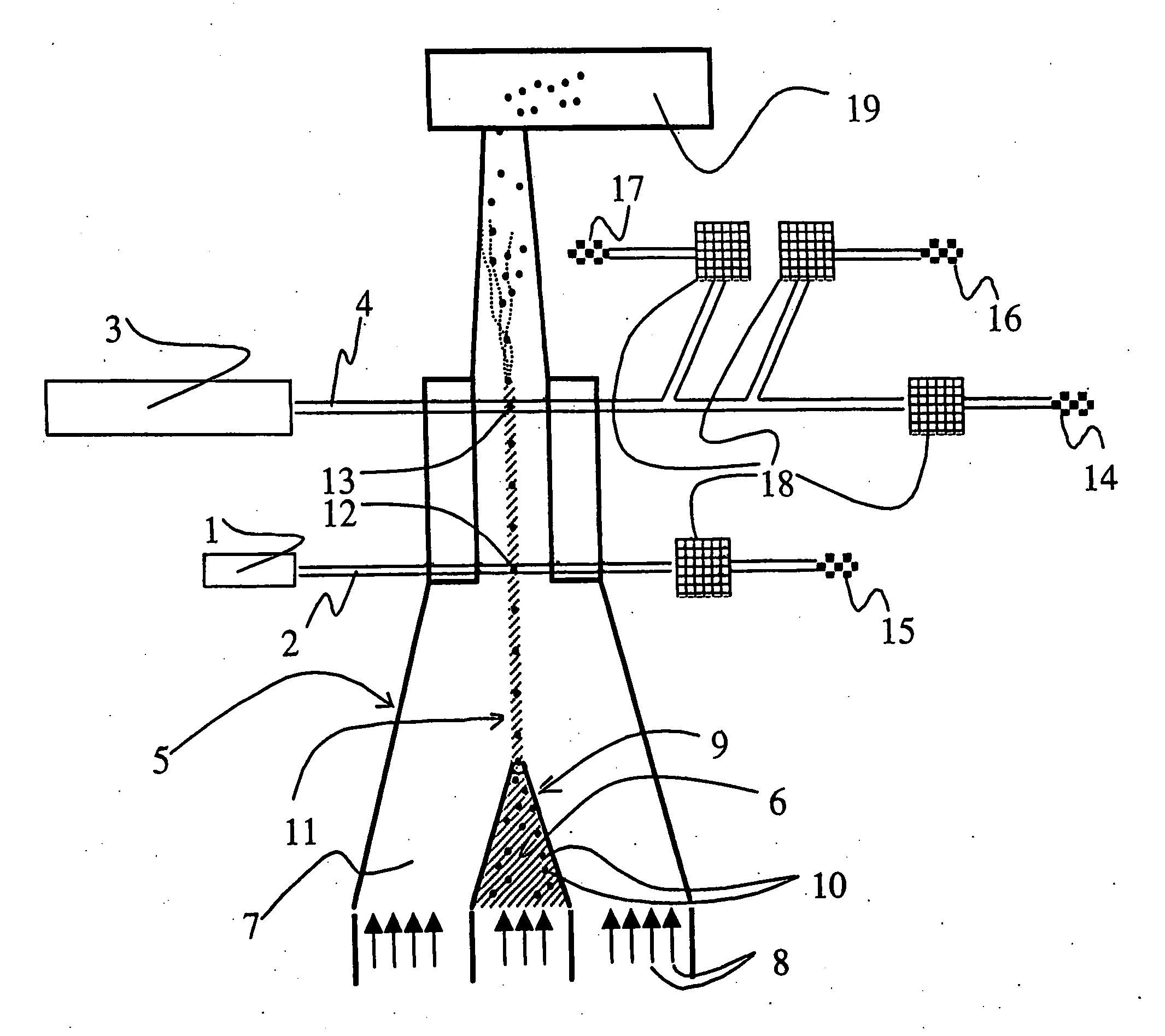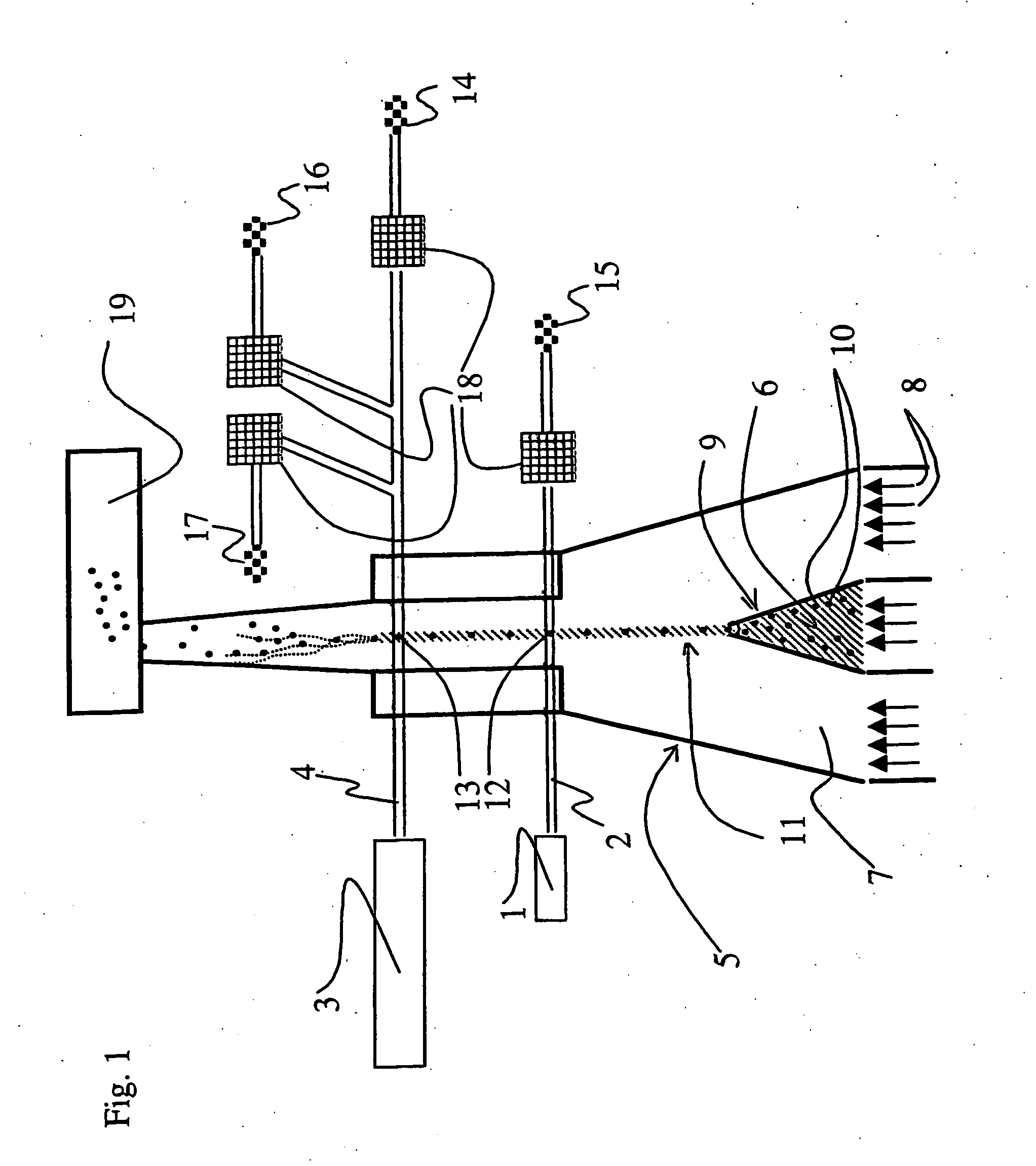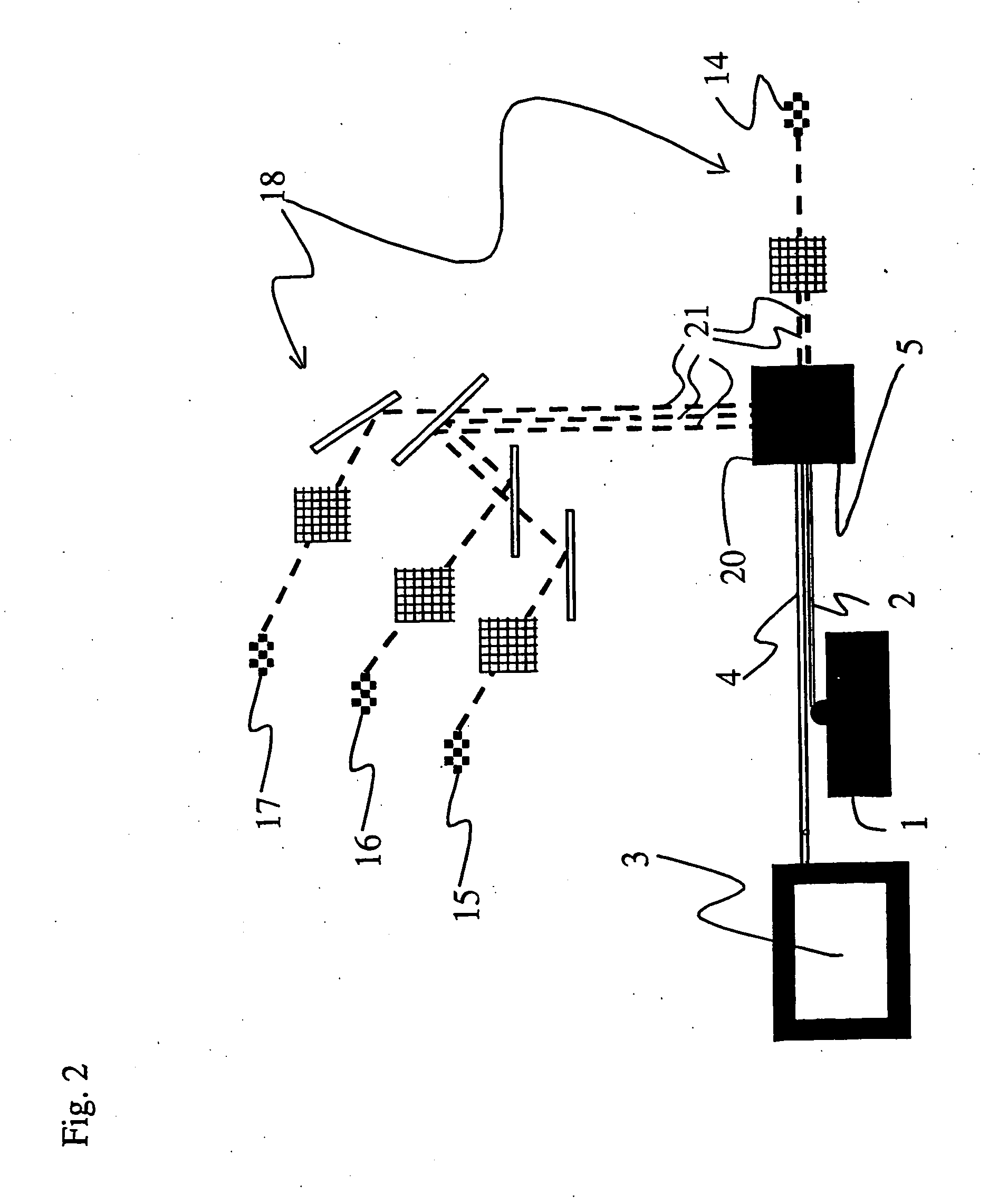The species-
specific identification and calculation of micro organisms from a mixed micro organism sample is slow and cumbersome with the methods used at present.
The disadvantages of the use include a relatively rapid decreasing of intensity (
photobleaching), which renders difficult the calculation of the
bacteria in the
microscopy-FISH method.
In addition, the pH sensitiveness of the intensity of the light emitted by the fluorescaine makes it difficult to use it in many applications, and slows down the production of reagents.
Fluorescaine also has a wide
emission spectrum, which makes it difficult to use it in applications utilising several fluorochromes.
Disadvantages of the
microscopy-FISH method involve slowness and interpretative nature of results due to the non-specific hybridization.
This causes difficulty of interpretation in the
microscopy-FISH.
Due to these reasons, the
repeatability of the results obtained by the ‘microscopy-FISH method often’ remains unsatisfactory.
Using this method, the analyse velocity can be improved a little, but the analysing of the sample is nevertheless rather slow.
As in a manual microscopy-FISH, the problem with the
automated microscopy-FISH is the determination of the luminance limit to be identified and the distinguishing of the non-specifically hybridized
bacteria from the hybridized target
bacteria.
Instead, flow cytometric analysis methods of
prokaryotic cells i.e. bacteria have not spread into wide use.
The methods known at present are not suitable for routine use and they cannot be used to calculate the micro organism concentrations of mixed micro organism samples.
118-126, and U.S. Pat. No. 6,225,046 of D. Vail, and patent EP0347039 of L. Terstappen. The methods based on the use of antibodies, have, however, not enabled a dependable species-specific examination of mixed bacterial samples, since antibodies are not bacterium species-specific.
A considerable difference between the FISH applications based on microscopy and flow
cytometry is the dissimilarity of the light sources used for the exciting of the fluorescent agents such as fluorochromes in the sample.
The use of such fluorochrome combinations is general in the analysis of
eukaryotic cell samples, but no fluorochrome combinations suitable for the FISH technique are known (Handbook of Fluorescent Probes and Research Products, Molecular Probes).
In practice this has meant that using the flow
cytometry-FISH it has not been possible to distinguish and calculate the
target population hybridized with the probe and
DNA stained from solely
a DNA stained
population containing the other micro organisms of the sample as well as from the background
population formed by the particles of non micro organism origin in the same analysis.
It has not been possible to calculate the number of micro organism cells contained in the sample and the portion of the hybridized target micro organisms in the same analysis.
The exciting and emission
wavelength spectra of the fluorochromes of the probes are so far from each other that the exciting of the fluorochromes with just one
laser is not successful, instead one must use two lasers having different wavelengths, the beams of which hit the particles of the sample at different times. In this method, both lasers must be used to distinguish the
target population from the rest of the bacteria of the sample.
In the same manner, both axes of the dot diagram are used to distinguish the
target population from the rest of the bacteria of the sample, and it is not possible to distinguish the total
bacterial population from the background
population at the same time.
Although one has used in the method very strong and expensive water-cooled lasers having the power of hundreds of milliwatts, the intensity of the fluorochromes used remains weak, and the population cannot be satisfactorily distinguished from each other in one analysis.
Also in this method, the low intensity of the
fluorescence of the fluorochromes used in the probes does not make it possible to distinguish the target bacteria i.e. the bacteria to be analysed from the rest of the bacteria contained in the sample.
The probe's fluorochrome used to distinguish the target bacteria from the rest of the bacteria in the sample uses its emission energy to excite the
DNA colour, and the
fluorescence of the target bacteria is not sufficient for their dependable distinguishing from the rest of the bacteria in the sample.
The target
bacterial population and the population formed by the rest of the bacteria in the sample are overlapping in the dot diagram, and it is not possible to calculate the number of bacterial cells and the portion of the target bacteria from the total number of bacteria.
Thus, these methods are not applicable for the calculation of concentrations of bacteria contained in complicated mixed bacterial samples such as faeces, as well as for the specific and dependable identification and calculation of separate bacterial species.
As a results of this, the flow cytometric analyses of mixed bacteria have been unreliable, and the microscopy-FISH is still the only method to be reckoned for the species-
specific identification and calculation of the bacteria contained in mixed bacterial samples.
 Login to View More
Login to View More 


